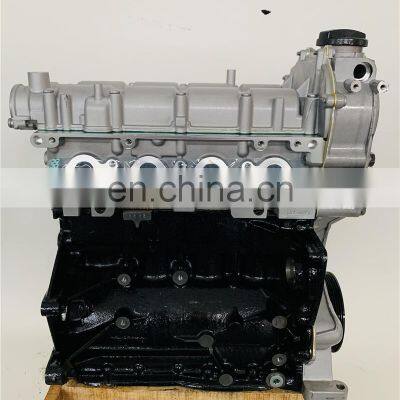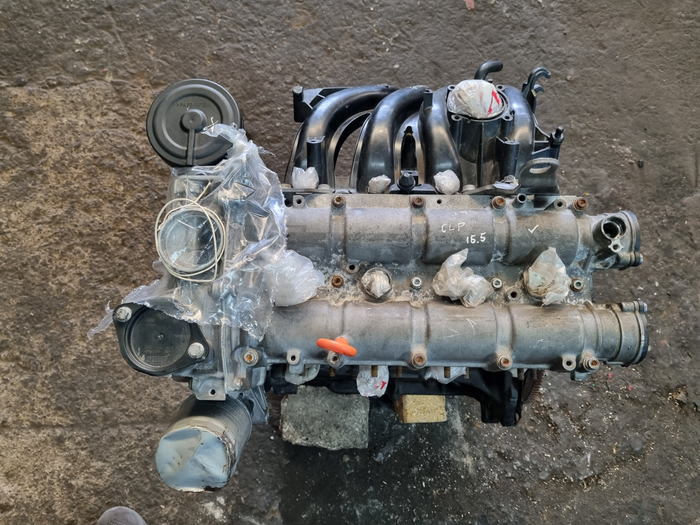Find a cost-effective clp engine for industrial applications.
Wiki Article
Just How a Clp Engine Can Boost Performance in Different Industries
The advent of CLP engines marks a substantial change in operational effectiveness throughout numerous markets, driven by their capacity to optimize fuel intake and minimize downtime. As companies significantly prioritize sustainability alongside performance, the function of CLP engines comes to be even more vital.Summary of CLP Engines
CLP engines, or Constant Fluid Propellant engines, represent a substantial improvement in propulsion innovation, particularly for area applications. These engines utilize a constant feed system that permits the sustained expulsion of propellant, leading to improved performance and efficiency compared to conventional strong or hybrid propulsion systems. By keeping a constant flow of fluid propellant, CLP engines can accomplish a lot more precise thrust control, which is crucial for navigating spacecraft in various goal situations.The style of CLP engines integrates sophisticated products and ingenious fuel administration systems. clp engine. This results in decreased weight and increased integrity, necessary aspects for long-duration area missions. Moreover, the continual operation decreases the threat of burning instability, a common challenge in traditional rocket engines.

Advantages in Manufacturing
The production of Continual Liquid Propellant (CLP) engines offers a number of remarkable benefits that improve both performance and cost-effectiveness. Among the primary benefits is the streamlined manufacturing procedure, which lowers the intricacy connected with traditional propulsion systems. By using fluid propellant, manufacturers can attain higher accuracy in engine efficiency, resulting in enhanced energy output and minimized waste.In addition, CLP engines facilitate a greater degree of modularity, enabling easier combination right into various production lines. This versatility can dramatically lower preparations and boost general functional adaptability. Making use of CLP modern technology likewise tends to decrease the demand for considerable maintenance as a result of fewer relocating components, which equates right into minimized downtime and operational costs.

Applications in Logistics
Leveraging Continuous Liquid Propellant (CLP) engines in logistics supplies significant advantages in operational efficiency and reliability. These engines offer a robust remedy for different transportation requirements, making it possible for the smooth activity of items throughout large ranges. The integral layout of CLP engines enables consistent power go to these guys result, which translates right into smoother and extra predictable transport schedules.One of the crucial applications of CLP engines in logistics is in sturdy freight transportation, where they can drive both ground and airborne lorries. Their capacity to keep high efficiency under varying lots conditions makes sure that shipment timelines are met, thus boosting customer satisfaction. In addition, CLP engines can be incorporated right into automated logistics systems, facilitating real-time monitoring and enhancing route preparation.
In addition, the toughness of CLP engines lowers maintenance downtime, enabling logistics companies to maximize their functional capabilities. This is particularly valuable in warehousing operations, where effectiveness in handling and delivering items is important. As logistics remains to progress, the integration of CLP engines stands for a forward-thinking approach that not only boosts performance however additionally supports the market's expanding demands for integrity and rate.
Influence on Power Efficiency
Exactly click here for more How do Continual Fluid Propellant (CLP) engines enhance power performance in transportation? CLP engines utilize a constant circulation of fluid fuel, maximizing burning processes and keeping a steady thrust outcome. This layout decreases power losses connected with conventional combustion engines, where fuel shipment can vary and cause inefficiencies.The constant operation of CLP engines enables a more reliable thermal cycle, causing greater specific impulse compared to standard engines. clp engine. This equates to minimized fuel consumption for the exact same amount of job done, substantially decreasing functional costs across various transportation fields, including aviation and maritime sectors
Moreover, the capacity of CLP engines to keep ideal efficiency under differing tons problems reduces the demand for regular velocity and deceleration, better boosting gas efficiency. Improved power efficiency not just adds to set you back financial savings yet likewise results in decrease greenhouse gas discharges, lining up with international sustainability objectives.
Future Trends and Innovations
Arising innovations in Continuous Fluid Propellant (CLP) engine modern technology pledge to revolutionize the landscape of transportation performance sites and sustainability. As industries pivot toward greener choices, CLP engines stand at the forefront, integrating cutting-edge materials and layout methods that improve efficiency while lessening ecological impact.Among one of the most promising fads is the fostering of hybrid systems that integrate CLP engines with sustainable energy resources. This synergy can maximize gas intake and decrease discharges, aligning with international sustainability goals. Additionally, improvements in computational fluid dynamics (CFD) are promoting the style of even more aerodynamically efficient engines, resulting in decreased drag and boosted gas efficiency.
Additionally, the growth of smart monitoring systems is established to boost operational efficiencies. These systems leverage data analytics and IoT innovation to optimize engine performance in real-time, guaranteeing that the engines operate within their most reliable parameters.
As research remains to check out different propellant formulas-- such as biofuels and synthetic gas-- the future of CLP engines looks encouraging. By utilizing these technologies, industries can not only enhance their effectiveness yet additionally add substantially to a cleaner, much more lasting future in transport.
Conclusion
In final thought, CLP engines stand for a substantial development in effectiveness across multiple markets. The assimilation of innovative materials and less moving components decreases upkeep requirements, while alignment with sustainability goals settings CLP engines as a pivotal modern technology for the future.Report this wiki page